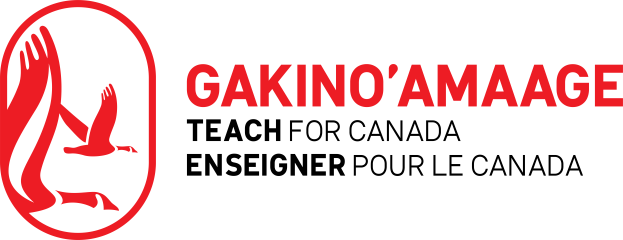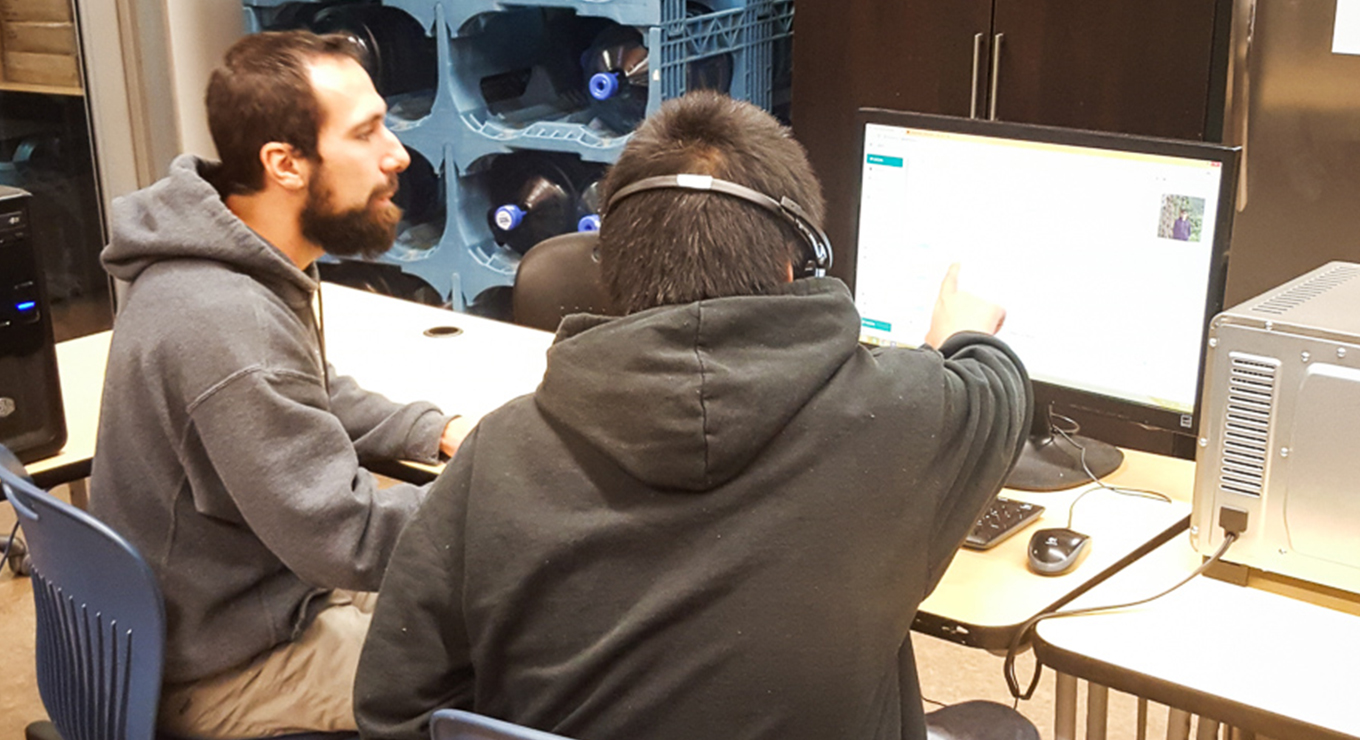Albee Eisbrenner has been teaching high school physical education and math through the Keewaytinook Internet High School (KiHS) while based in North Spirit Lake First Nation, Keewaywin First Nation, and Kitchenuhmaykoosib Inninuwug through Teach For Canada over the last two years. Since he was evacuated due to COVID-19 he’s been teaching remotely from Winnipeg. Read on to hear about Albee’s experiences teaching online, how COVID-19 has changed things, and the advice he has for northern teachers taking on virtual learning.
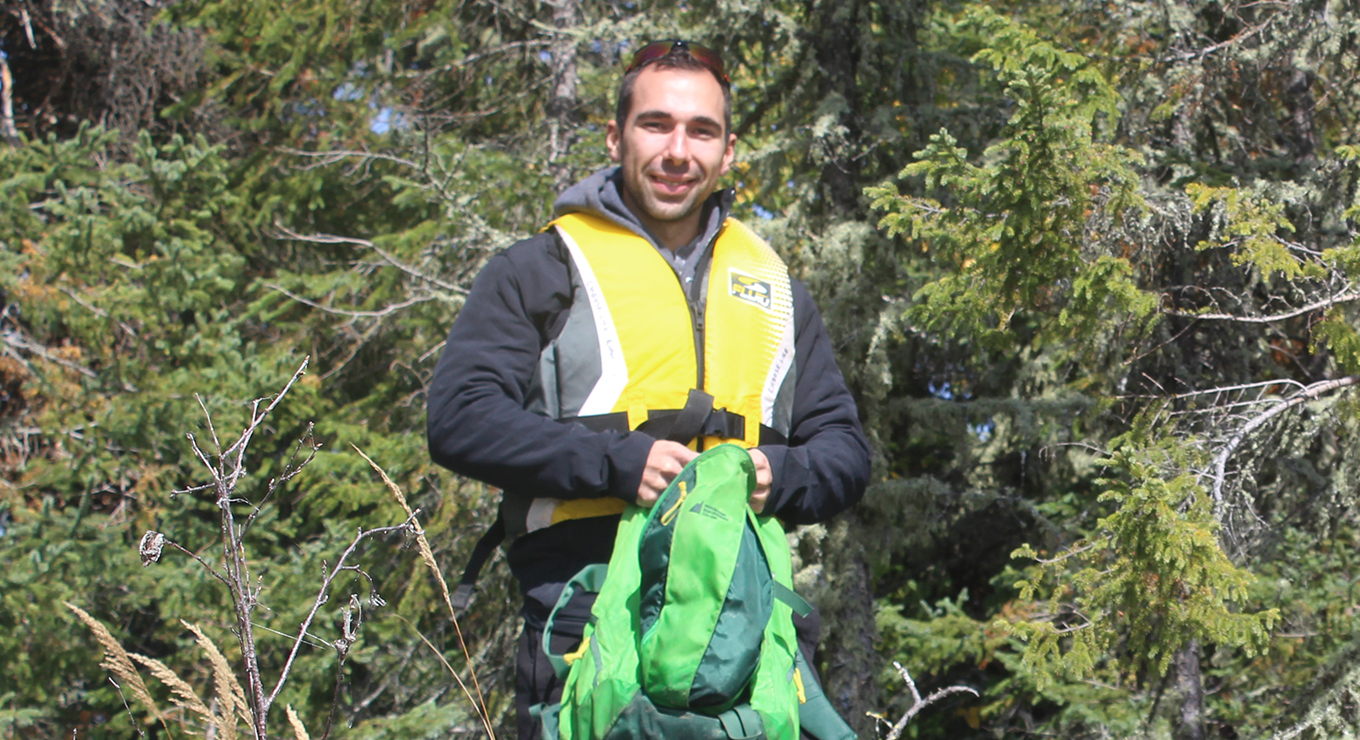
Teach For Canada teacher Albee has been teaching through KiHS for the last two years.
In some ways I feel like northern educators have had a head start when it comes to the isolation we’ve been experiencing during COVID-19. We’ve already had to learn how to build strategies to stay healthy and well. I was evacuated out of the community and I’m living in Winnipeg now, and it still feels very much like I’m in the North as far as being able to see family and friends and having limited access to services and recreation. The one thing that is different is that I can’t see my students, which has been hard.
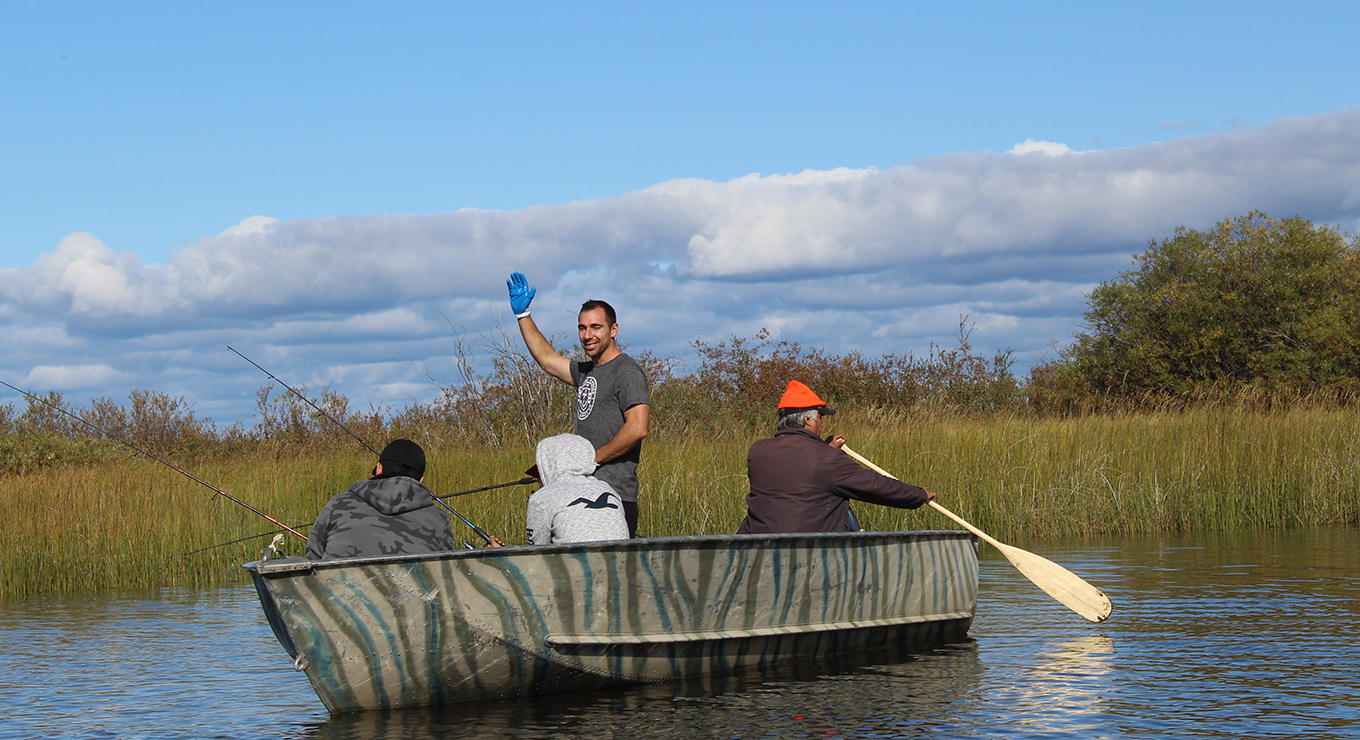
Albee built strategies on how to stay healthy and well as a northern teacher.
I have worked through the Keewaytinook Internet High School (KiHS) since 2018. We connect students with resources to succeed at school when they would have otherwise been left behind. I’ve also been working as a graduation coach to help connect students to post-secondary options. One of the biggest strengths of our program was that we have a certified teacher in each community to help guide learning. Being evacuated has made it a lot more challenging because we’re no longer able to directly facilitate content with our students.
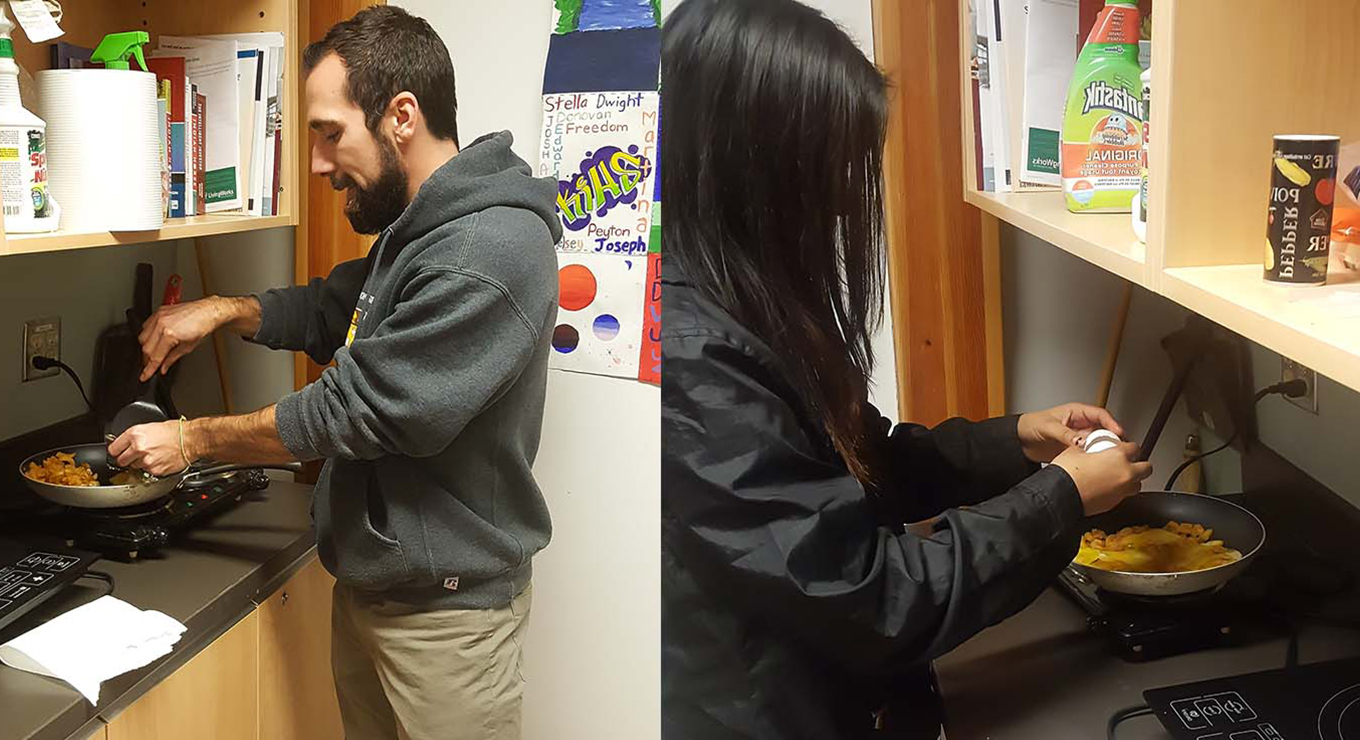
Teaching remotely during COVID-19 has been more difficult for Albee without directly facilitating content with students.
I chose to teach through KiHS because they allowed me to teach my qualifications of mathematics and physical and health education. This allowed me to teach but stay in a northern community and still be connected to a whole team of high school teachers. An added benefit now has been the experience I’ve had with distance learning and education. No one could have predicted how these events turned out but it’s become a very valuable skill to have.
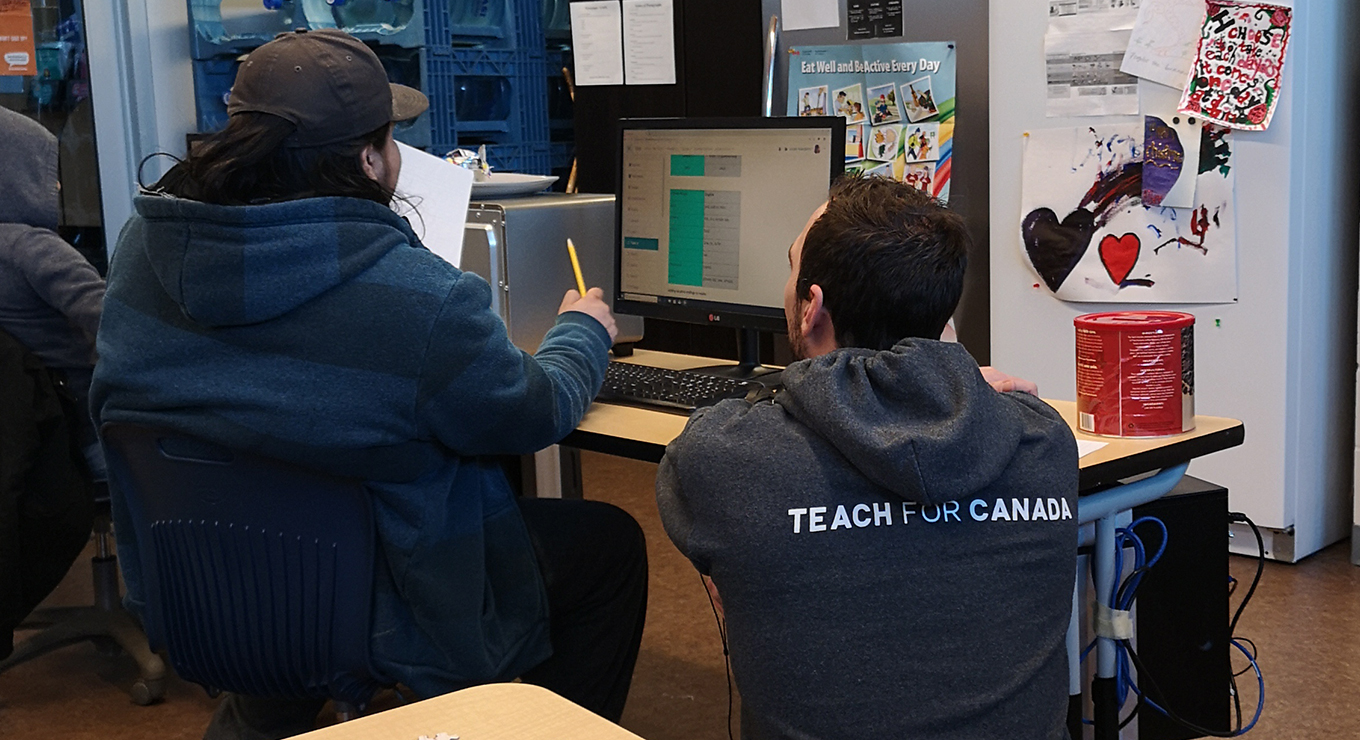
Albee helps a student work through online learning in North Spirit Lake First Nation in 2019.
It’s also been a smoother transition for our students. It’s a unique situation because we already have the support for distance learning and we can continue to operate. It did change how we approach students and the community, however. We’ve offered to take on additional students from other communities who have returned home to quarantine with their families. We’ve also opened up programming for Grade 7/8 for schools that stopped operating altogether. We’ve all pulled together to make it happen.
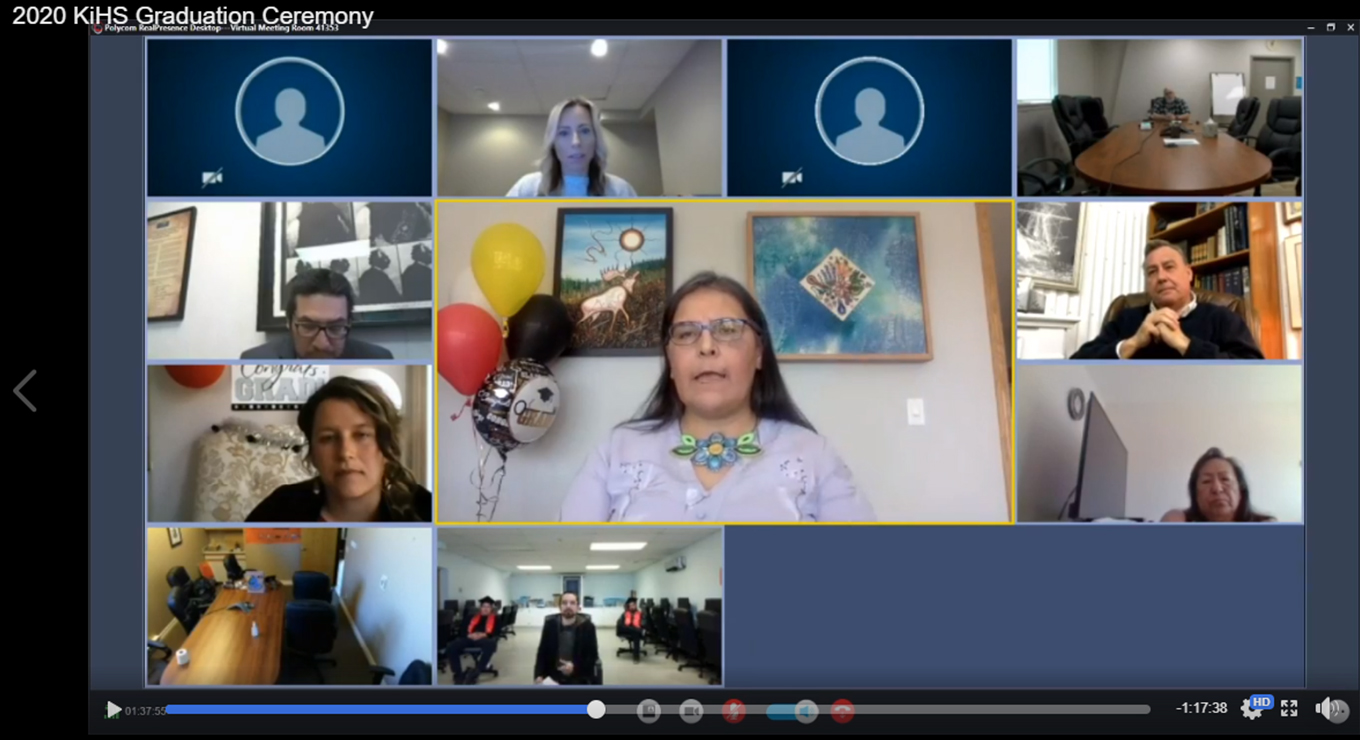
KiHS hosted its first-ever fully virtual graduation ceremony this year.
We’ve “embraced the strange” this year. We hosted our first fully virtual graduation ceremony on May 20th. Components of our graduation ceremonies in the past were online but this year we had to get really creative. We used a mixture of pre-recorded and live content and created a virtual procession for each student. We had live performances, a keynote speaker, awards, and a valedictorian speech. We invited other schools to join us to see what an online graduation ceremony could look like. It was a really special moment for the students, their families, and their teachers. You can watch the recording here.
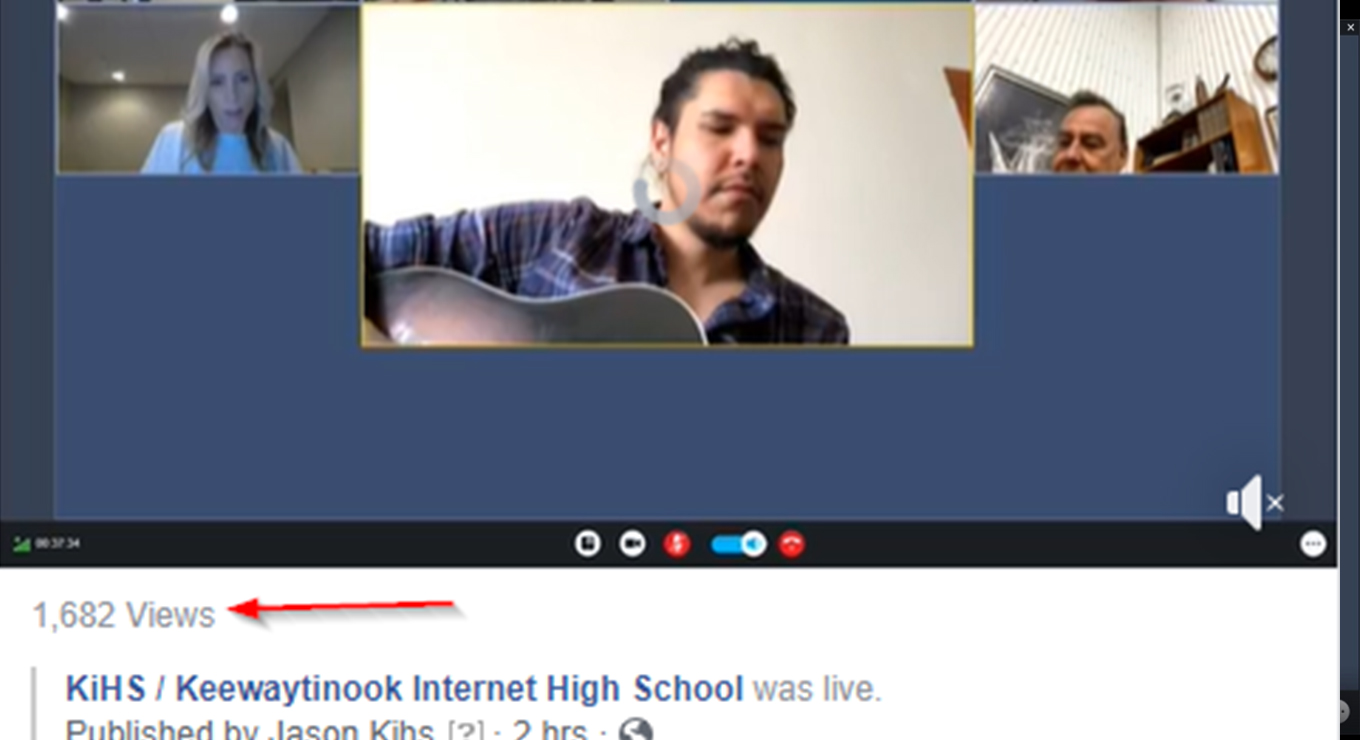
The virtual graduation ceremony had a huge turnout with over 1,500 people tuning in to celebrate the graduates.
As for next year, no one knows what it is going to look like. I’m doing everything I can to set myself up and I hope that it’ll work out. I’m a planner so it’s a tough one. But if not, there’s always a plan B, or a plan C to realize my goals.
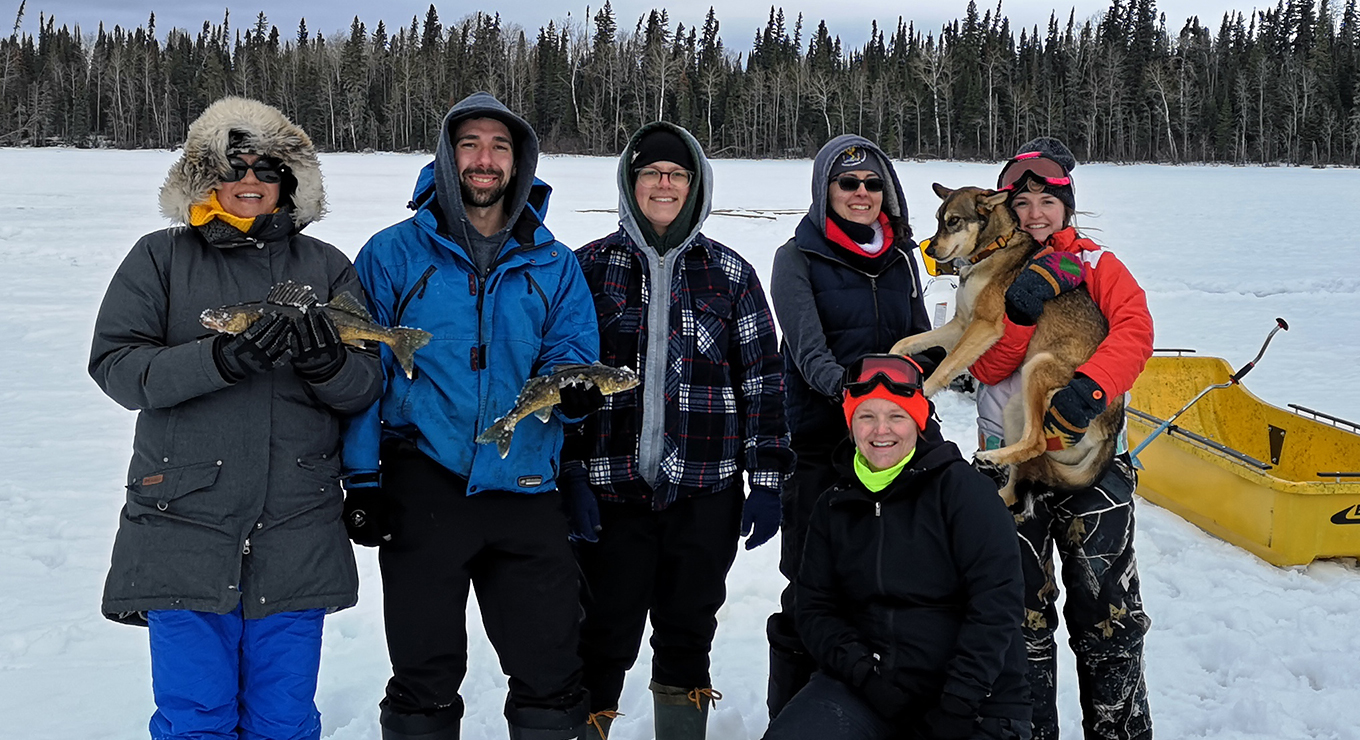
Albee knows the school year might look different this year but he’s confident he’ll find a way to achieve his goals.
Here is some advice for northern teachers who might be taking on online learning for the first time:
Get on Facebook
Every single student and community member I’ve met has Facebook. So, if you need to get a hold of someone you need to get on Facebook. Two years ago Teach For Canada told my cohort of teachers to get professional Facebook accounts and it’s been the central communication method I’ve used since coming North. We have a Facebook group with all of the students’ families to engage with the learning. We even do roll calls on it. Facebook for me has been an excellent educational tool.
Be innovative, don’t just be a passenger
I’ve been lucky that we’ve had a platform and a scheduling framework to follow when building online content. It’d be hard to do it alone. You’ll need to work with whatever framework your institution is setting up. Follow what they’ve outlined, but be innovative and build on that. This is the time where you can stand out and showcase what you learned in college and apply it online.
Connect meaningfully with your students
I suggest reaching out to your students individually at the start of each week to see how they are doing physically and mentally. Ask them how their weekend was. And then connect them to any support they might need that week like a wellness coordinator or a guidance counsellor. It’s important to form that genuine connection and make sure they know you value them as a person before you even mention school work. From there, you can keep tabs on them and see what their goals are for this week, how their progress has been, and talk about accountability. Their health and wellness should be the first priority, and their education will follow.
Support differentiated learning online
Online programming won’t be the same for every student, just like in the classroom. You should be working with your students and give them the freedom to identify their own personal goals and to make sure their projects match their interests. You can also use different mediums for instruction like videos and other kinds of content. Beyond that, it’s also important to integrate community-based activities into your lesson plan and to build those connections. Hunting, fishing, collecting wood, and clearing trails are all physically demanding work and many of my students are already doing that for their families and communities. So we talk about how that is building your muscles and its benefits for physical activity.
Take care of yourself
We learned a lot at Teach For Canada’s Summer Enrichment Program about how to keep yourself healthy and well in the North. Northern teachers have great ideas on how to maintain health during times of isolation because that is what we live. Find some strategies that work for you that help to support the four dimensions of health: physical, social, emotional, and spiritual. It’ll help you embrace this strange time.
Interested in teaching in a northern First Nation? Apply by June 1st for the 2020/2021 school year. Questions about how COVID-19 will impact the process? Read our FAQ.


